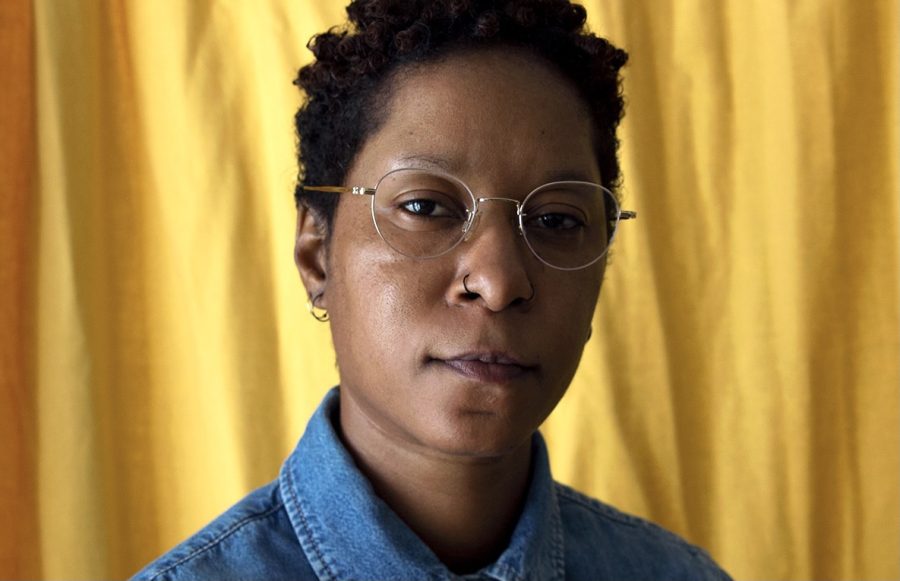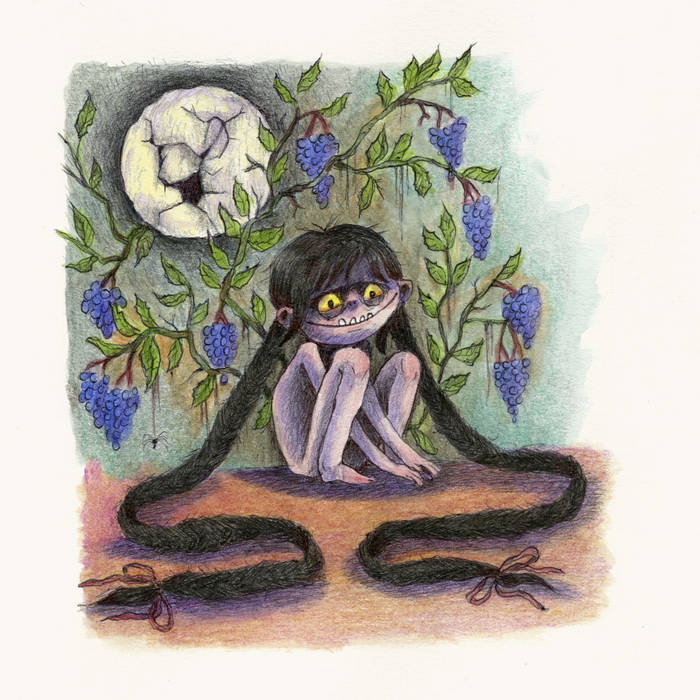A&E Editor Elias Roman and Lifestyle Co-editor Priscilla Puno delve into the work of UCSD MFA graduate, poet, and video artist dana washington-queen in this artist spotlight for The UCSD Guardian.
Our introduction to dana washington-queen’s art came through Communications Professor Zeinabu irene Davis’ Black Women Filmmakers class, where washington-queen was a guest lecturer. Though washington-queen identifies as non-binary, their presence as a guest speaker for the class was not at all out of place. Their work deals intimately with the central intention of Professor Davis’ course: representation and advocacy in not only film, but the art and media world at large for those who have been traditionally excluded and marginalized from mainstream narratives.
dana washington-queen attended California State University, Long Beach where they received their bachelor’s degree in English-Composition. They subsequently entered the Visual Arts master’s program at UC San Diego, completing it in the Spring of 2020. washington-queen is a non-binary Black poet, video artist, photographer, and educator whose work focuses on representations of Blackness in media. Their work reframes traditional spaces of media in an act of rupture with institutional ideas about art: opening up and creating a space for new ways of thinking and new lenses through which to consume art. The work forces viewers to confront the ways in which their gazes have been influenced by wider social institutions, bringing them face to face with harsh truths about the forces that shape and construct our realities.
Central to this reframing is washington-queen’s theory of “Black Noetic,” which they refer to as “both a methodology for production and psychological response to human conflict, specifically for the black figure.” Black Noetic Theory highlights the intuitiveness and inventiveness that is weaved into the Black experience, “making a way out of no way, and making it up as you go along,” as Kevin Young writes in “The Grey Album: The Blackness of Blackness.” This intuitiveness permeates washington-queen’s work, disrupting traditional narrative structure, breaking down categorical boundaries of documentary, photography, fiction, and poetry.
Deconstructing conventional forms of film, washington-queen’s short video art piece “Ode to AND1 Basketball: Notes on the Black Sporting Body” deals with Black identity, reconstructing the corporeal body into a work of art. This short follows the structure of a poetic-prose essay which transforms everyday gestures and movements to emphasize the agility and swiftness of the Black body.
washington-queen introduces the video describing the impact AND1 Basketball audio-visual mixtapes had on their childhood, pairing the narration with a slideshow of photos. As an athlete themselves, they utilized these mixtapes as a study tool to help guide them in their journey as a basketball player. Taking inspiration, washington-queen focuses on their fleeting movements, as they move freely amongst the other streetball players. washington-queen starts to mold a new relationship between art and the Black body.
While watching the video, audiences are faced with a split-screen — one side capturing the AND1 Basketball mixtapes and the other showcasing washington-queen through a MacBook photo booth recording. This intuitively pushes viewers to draw a connection, however small or subconscious, between the present and the past. They create a new temporal space in which both present and past coexist. As the mixtapes play, washington-queen creates a side-by-side analysis of the streetball players in motion, as their “arms spread like [an] angel, Black man airborne,” creating poetry of their movements and viewing their bodies as otherworldly.
Focusing on the filming techniques of the mixtapes, they describe the video editor’s use of excessive repetition “as an invitation to read the black body differently, not only as an object but as a phenomenon.” washington-queen uses this aspect of the AND1 mixtapes to spotlight the movements of the Black body, but also to “liberate it from subjective representation, from object … from mere sports entertainment.” Emphasizing the lively nature of the Black body, washington-queen focuses on removing the Black body from the gaze of white spectatorship, creating a new perspective for audiences to view the Black body as art and giving the physical being a poetic meaning. In doing so, washington-queen emphasizes the intuitiveness of both the editor and players’ artistry. By incorporating the mixtape into their poetic-prose piece, washington-queen carefully and purposefully reframes viewers’ interpretation of AND1 as more than just entertainment, allowing viewers to experience Black Noetics in real time. washington-queen ultimately formulates a new meaning of the Black body through this quick 4-minute video, reconstructing a new meaning of Black identity and its relationship to spectators and their societal expectations.
UCSD has been home to many great artists and dana washington-queen is no exception. Their work is actively deconstructing and rebuilding the ways in which audiences consume media and art, and creating new spaces for Blackness to just be. They are currently planning a solo exhibition with the Institute for Contemporary Art at Virginia Commonwealth University, where they will debut a new piece focused on the relation of the Black body to the labor of spectacle in sports and the broadcasting technology used. We encourage you to check out washington-queen’s website, whether to learn more about Black Noetic Theory or to check out the rest of their portfolio.
Image courtesy of dana washington-queen.
Artist Spotlight: dana washington-queen
Elías Román and
Nov 28, 2021
0
More to Discover








